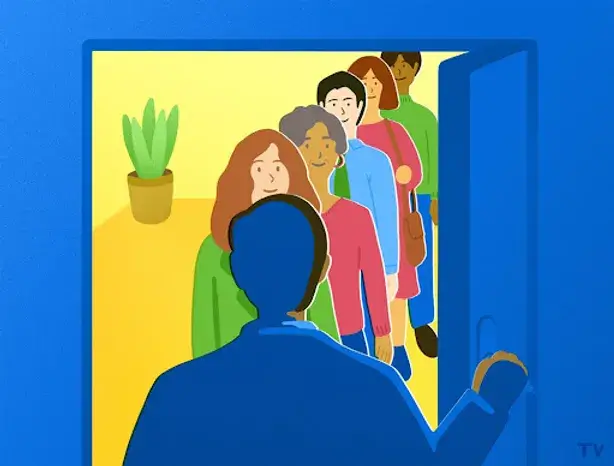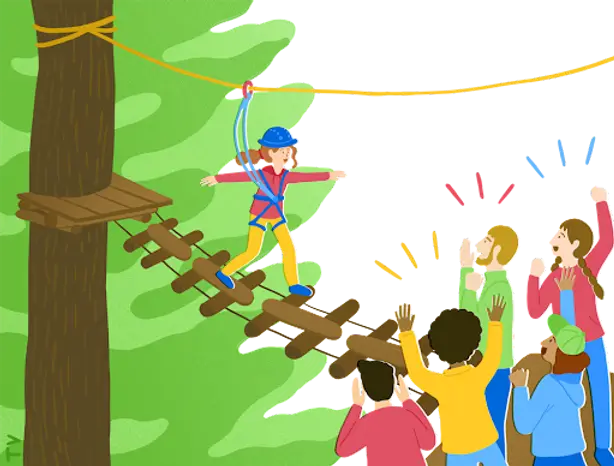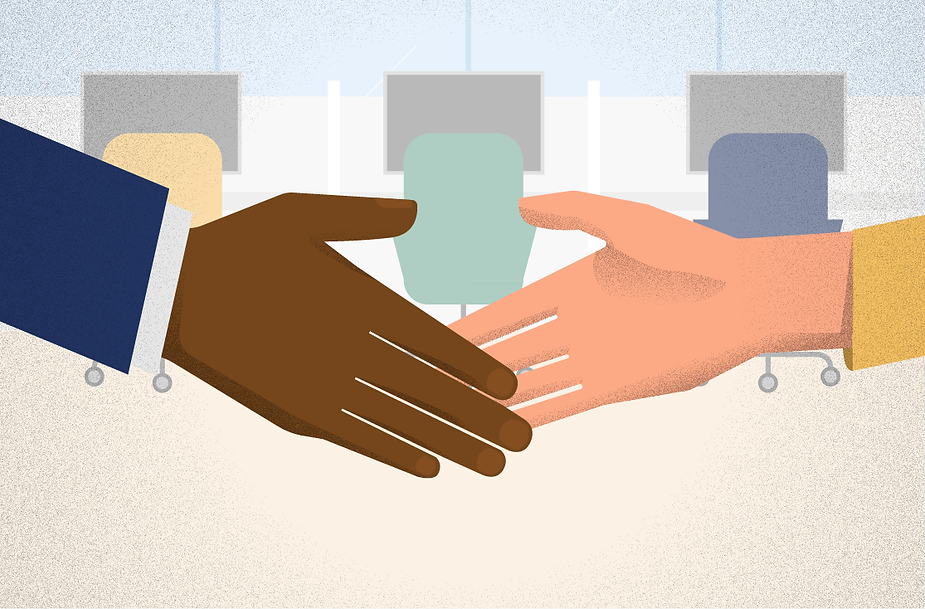How we approached the socially-anxious, but necessary experience of networking in our August training nudge
Our latest continuous learning nudge, "Networking," was fondly referred to by the Content Team as the nudge on “How not to be gross."
And no, we weren’t referring to that moment when, in order to shake someone’s hand at a networking event you have to stick your folder under your arm; pop the six-story-tall, cheese-and-cracker tower you were holding straight into your mouth; put your seltzer in your other hand; wipe the condensation off on your slacks; and then assure the person, “It’s just from the ice. My palm isn’t that sweaty.” (Unrelatedly, networking events need more tables.)
We gave the nudge that nickname because we know how hard networking can be to get right. Even with the best of intentions, there can be an icky feeling to asking people if they want to enter into a professional relationship with you, a very well-meaning human with a mouth full of sharp cheddar.
The Benefits
We know that cultivating a diverse network can have an impact on a company’s bottom line. In fact, companies with the most ethnically/culturally diverse boards worldwide are 43% more likely to experience higher profits, according to McKinsey & Company's latest research on inclusivity and diversity. Likewise, companies in the top quartile for gender diversity on their executive teams were 21% more likely to have above-average profitability than companies in the fourth quartile. For ethnic/cultural diversity, top-quartile companies were 33% more likely to outperform on profitability.
Not to mention the fact that it’s important to the majority of employees that companies prioritize diversity and inclusion.
The Networking Danger Zone
But purposefully seeking out a diverse workforce can start to enter dangerous tokenism territory–meaning a person or a group of people are given an opportunity (i.e. hired) to give the appearance that a company is diverse or fair.
We know. It can feel like you’re stuck between a rock and hard-to-open door that you realize is actually a pull not a push, but not before everyone watches you hurl your bodyweight at it several times.
So, with that in mind, here is an abbreviated list of the tips for healthy networking that we provided for our learners in this month’s continuous learning nudge. Yes, free of charge . . . because networking is all about multidirectional, no-strings-attached support.
Tips for Healthy Networking

Thinking sideways?
The ideal networking approach is to pursue both lateral and vertical networking simultaneously. Mentoring relationships (vertical networking) provide guidance, protection, and other benefits. Peer relationships (lateral networking) are useful for information sharing, career strategizing, and job-related feedback.
Research shows that networking improves individuals’ career outcomes on both an objective and subjective level. Increased professional networking is, in fact, related to the number of promotions an individual receives in their career. Folks who engage more in networking also tend to see a growth rate of salary over time, have higher performance ratings, and have greater overall career satisfaction.

The more the merrier!
If you take a step back and find your network is pretty homogeneous, you have the power to expand it in healthy ways! Attend new events run by different organizations than the ones you already support. Spend time in different parts of your office. Join in on a team activity you might have otherwise skipped.
Just be sure you remain open to connecting with whoever is there. Don’t target people of a specific identity as “the right kind” of person you “should” be networking with (that’s tokenism).

Our general philosophy . . .
Have fun! Networking can be—dare we say it—enjoyable. Meet people who geek out over the same things you geek out over and take the time to build networks that focus on providing support more than solely on creating professional opportunities. Once sustained, trusting, supportive relationships are formed, opportunities will come.
From Gross to Guild
We may not have (yet) mastered the classiest way to enjoy a wedge of brie, but we’re happy to let cheese-etiquette take a backseat to healthy and inclusive networking techniques. And, it seems that our learners agree.
With an 88% approval rating (and a special callout to the learner who was delighted by our vegetable-company pun, “Lettuce Help”), our learners are eager to explore better networking techniques (especially while working from home).
Not only does this bring us great joy (We love when learners love our content!), it also gives us hope as professionals. Together, we’ll be able to shed the discomfort of networking, one honest relationship at a time.
And, a few extra tables wouldn’t hurt.








